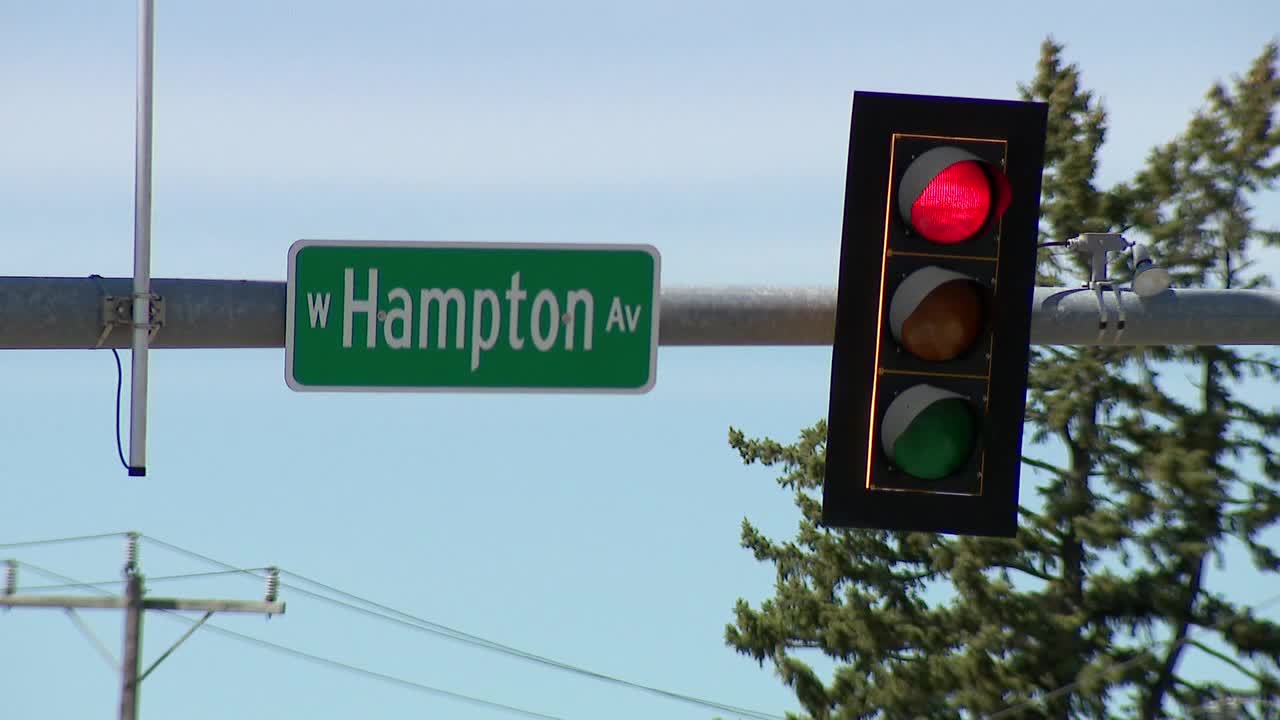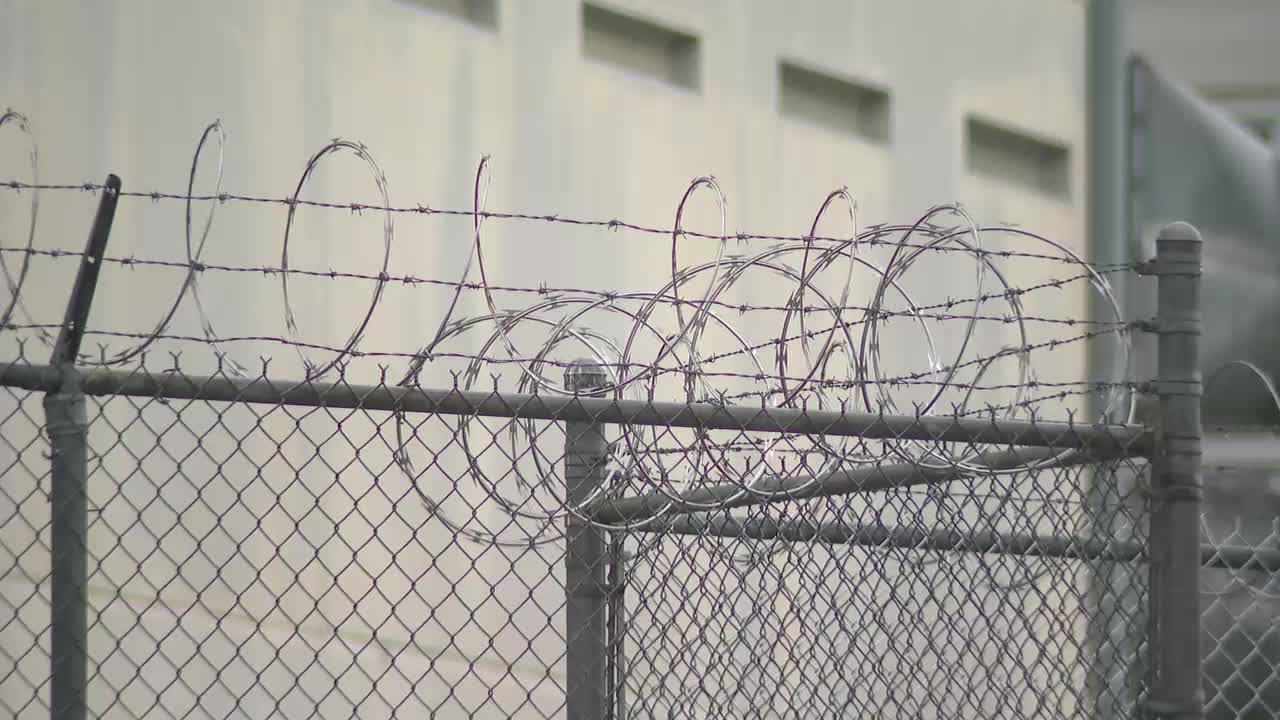World
Myanmar’s jungle war: ‘If I don’t die now, when will I?’
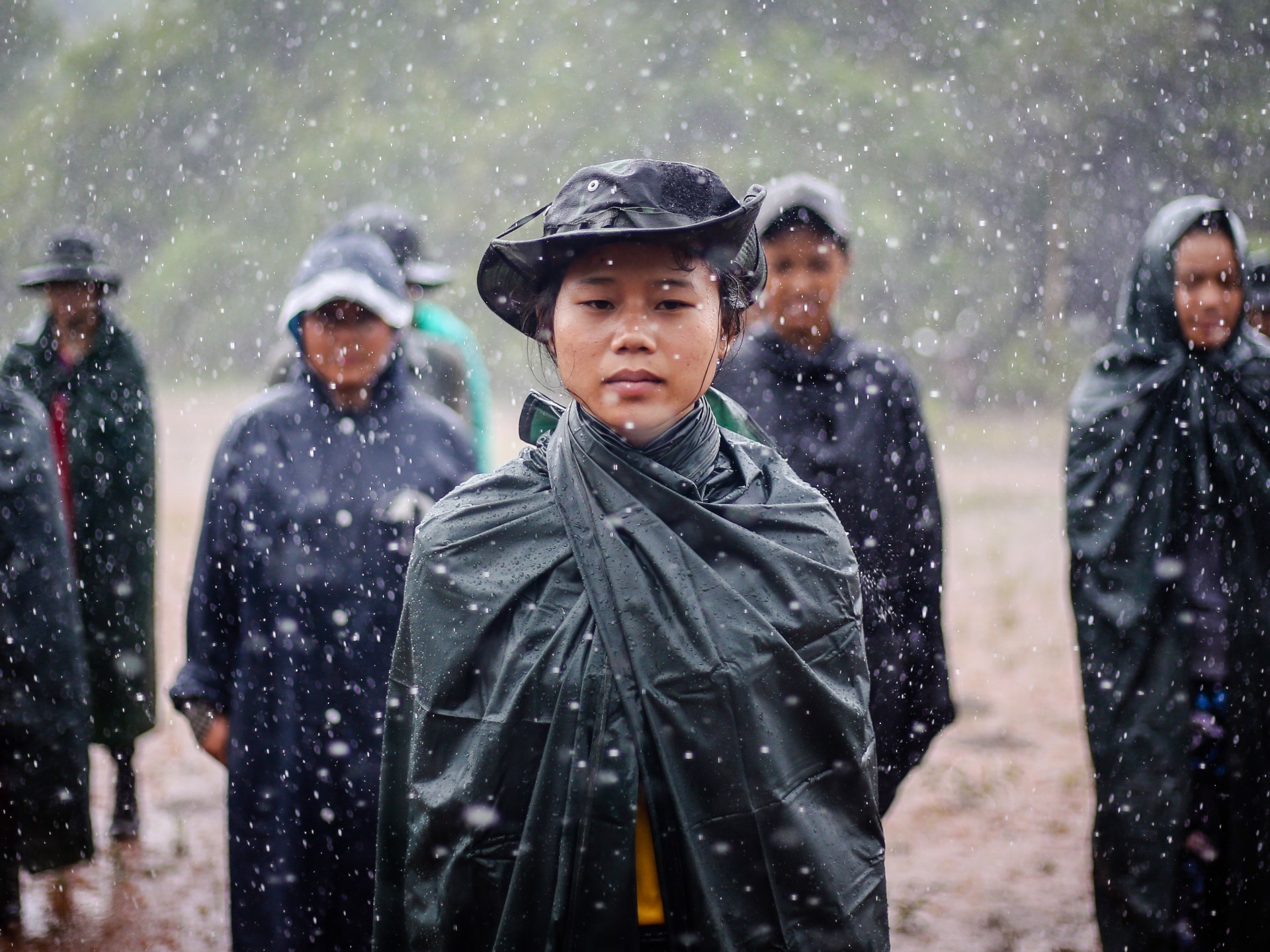
Demoso, Eastern Myanmar – The rebel commander studies a chicken bone in a search for clues as to the fate of his coming attack against the Myanmar military.
Scraggly bearded Reh Du, 27, frowns. The signs from the bone are mixed.
Nevertheless, his underlying confidence in the plan of attack against Myanmar’s military in the hills of eastern Kayah state is steadfast.
“I believe we will win,” the shrapnel-scarred fighter says after his act of divination – a practice these ethnic Karenni fighters embrace in uncertain times.
“Today or tomorrow,” he says.
Around Reh Du and his prophecy ritual, villagers in the conflict-torn township of Demoso celebrate Karenni new year, dancing under totem poles to the beat of traditional drums and the distant thunder of artillery shells.
Like the other ethnic minorities of Myanmar’s borderlands, the Karenni have fought against persecution by the military for decades in Kayah state, which is located between Myanmar’s capital Naypyidaw and the border with Thailand to the east.
Kayah has also witnessed one of the most coordinated rebellions in the country since Myanmar’s military seized power from an elected government in February 2021.
The brutality of the crackdown on those protesting peacefully against the military’s power grab evoked outrage, which has since boiled into a nationwide revolt.
Ethnic armed groups, such as the Karenni, have provided military training to everyday protesters who have risen against the military under the banner of the People’s Defence Force (PDF).
A striking feature of the uprising has been the range of people leaving from Myanmar’s cities – baristas, fitness instructors, marketing managers – to take part in combat training in the jungle.
As a result, the military government has lost control of most of Kayah, the smallest of Myanmar’s seven states, along with western border areas and even swaths of the military’s traditional recruiting grounds in the Magway and Sagaing regions.
Sporting a fresh tattoo of a Kalashnikov assault rifle on his forearm, ethnic fighter Reh Du is a leading figure in the Karenni Nationalities Defence Force (KNDF) – an ethnic armed group.
Interviewed earlier this year, Reh Du tells Al Jazeera he fights to protect Karenni identity and to maintain the independence of their way of life free from domination by Myanmar’s military and the authorities of the country’s majority Bamar ethnic group.
He spent eight years in a refugee camp, he says, before being jailed under the previous administration of Noble laureate Aung San Suu Kyi for protesting against the construction of a statute of her father and founder of the military, Aung San, in Kayah’s capital Loikaw.
Now Aung San Suu Kyi is herself detained by the military, recently being placed under house arrest and her 33-year jail term on corruption charges reduced by six years.
Reh Du told of worrying that if Aung San Suu Kyi was released, she might call off the uprising and the PDF’s armed operations.
“In Myanmar, the cult of personality is very strong,” he says. “If she says stop, they will stop.”
He also sees a difference in the commitment of fighters with financial means and other options in life compared with those who were grass-roots recruits to the struggle.
Urban recruits to the resistance often drop out, Reh Du says, leaving combat after a time to pursue other paths, such as educational and employment opportunities.
“Not only are rich people afraid to die, but our determination is not the same,” he says, telling how working-class Karenni people drive the revolution in Kayah state.
He has lost close friends in battle and he no longer sees his family because he believes the sight of their poverty will weaken his resolve to continue with the armed struggle.
“If you are a revolutionary, you cannot go back home,” he continues, explaining to Al Jazeera how being a fighter had required sacrifice in every aspect of life.
“You will see your family have nothing and you will never get strong. If you are fighting you must stay strong,” he says.


World
France's May Day march turns into political arena ahead of EU election
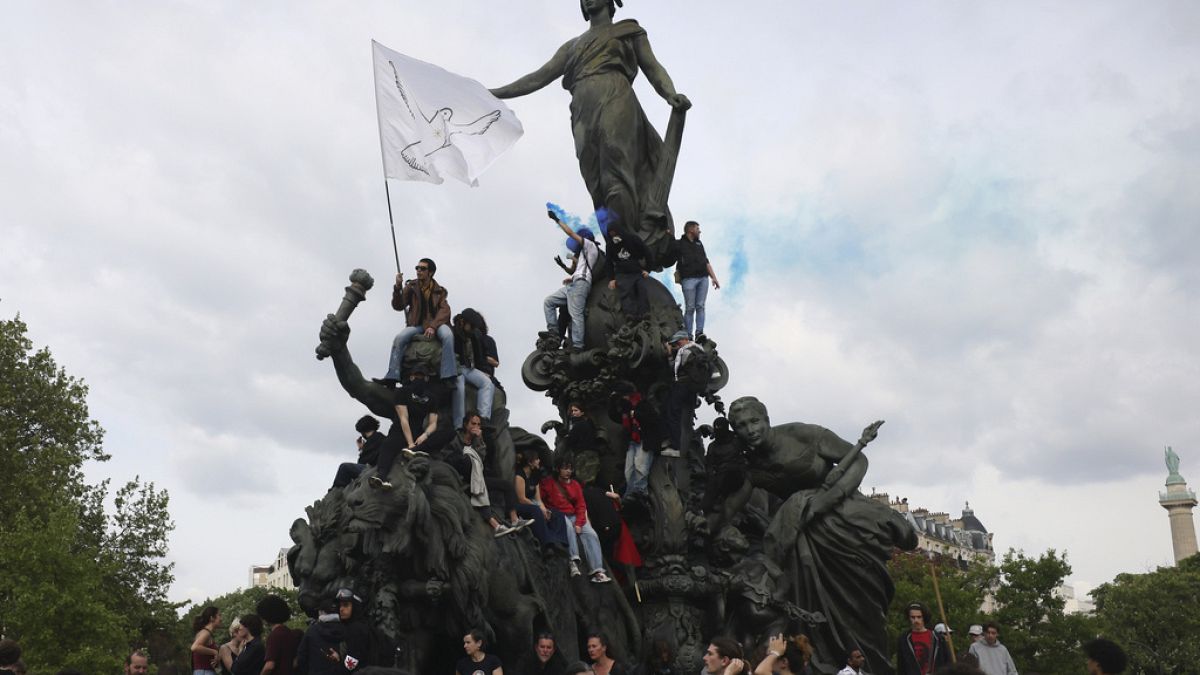
Many left-wing contenders didn’t miss the opportunity to attend the traditional May Day protest in Paris, while the far-right politician Jordan Bardella, currently leading the polls, announced the rest of his candidate list in southwestern France.
The usual chants for higher salaries and equal pay echoed across the streets of Paris this Wednesday during the traditional May Day labour rights march.
Ten of thousands of protestors took to the streets of the French capital against a backdrop of new demands such as peace in Gaza and against the upcoming Paris Olympic Games.
But with less than six weeks left before the European elections on 9 June, the event turned into a highly political one.
Many left-wing candidates didn’t miss the opportunity to present their campaign, all vying for attention.
Representing the Communist party for the EU elections, Léon Deffontaine, the 28-year-old candidate is focusing his campaign on energy bills — a topic that catalysed numerous protests in France and Europe since Russia’s full-scale invasion of Ukraine.
“The first measure I want to put in place is to take France out of the European electricity market to reduce energy bills. Today, we’re paying far more than the price we pay to produce electricity,” he told Euronews.
Others emphasised the importance of protesting the rise of the far-right, currently leading the polls, represented by Jordan Bardella of the Rassemblement National party (RN).
“May 1st is also an opportunity to remember that we must always fight against these anti-democratic, anti-republican parties that unfortunately swarm our country,” said Marie Toussaint, leader of the Green Party for the 9 June elections.
According to a poll by IPSOS ordered by Euronews, Macron’s centrist alliance Renaissance is lagging by 15 points behind Bardella’s party.
Meanwhile, in the southwestern city of Perpignan, Jordan Bardella gathered more than 2,000 people to announce his party’s first 35 candidates for the elections.
These include candidates such as Fabrice Leggeri, ex-boss of Frontex, the European Border and Coast Guard Agency.
End of April, two NGOs filed a civil complaint against Leggeri accusing him of being complicit in crimes against humanity for enabling ‘pushback’ of boats full of illegal migrants between 2015 and 2022.
Bardella’s move was highly criticised by left-wing parties, claiming the far-right politician was taking away the attention from worker’s issues.
“Taking advantage of May 1st to launch a campaign shows that he couldn’t care less about French workers,” reacted Léon Deffontaines, the Communist candidate.
In Saint-Etienne (near Lyon), the head of the socialist party, Raphaël Glucksmann, was prevented from joining the march.
Multiple protesters threw paint and eggs at the EU election candidate, currently third in the polls after the far-right and Marcon’s centrist alliance.
In total, about 121,000 people marched across France according to the Ministry of the Interior, while the main labour union CGT claimed “more than 210,000” participated in the marches in the country.
World
New Russia sanctions target weapons development and countries assisting in sanctions evasion
WASHINGTON (AP) — The U.S. on Wednesday imposed new sanctions on hundreds of firms and people tied to Russia’s weapons development program, more than a dozen Chinese firms accused of helping Russia find workarounds to sanctions and individuals tied to the death of Russian dissident Alexey Navalny.
The sanctions imposed by the Treasury and State departments target Russia’s military-industrial base, chemical weapons programs and people and firms in third countries that help Russia acquire weapons components as its invasion of Ukraine has entered its third year.
Treasury Secretary Janet Yellen said the action “will further disrupt and degrade Russia’s war efforts by going after its military industrial base and the evasion networks that help supply it.”
The sanctions come as the Senate gave final approval to legislation barring imports of Russian uranium, boosting U.S. efforts to disrupt Russia’s war in Ukraine. President Joe Biden is expected to sign the bill into law.
About 12% of the uranium used to produce electricity at U.S. nuclear power plants is imported from Russia, according to the U.S. Energy Information Administration.
A spokesperson for the National Security Council said Wednesday that Biden, a Democrat, shares lawmakers’ concerns about U.S. reliance on Russia for low-enriched uranium to support its domestic nuclear fleet.
Included in Wednesday’s sanctions announcement are importers of cotton cellulose and nitrocellulose — used to produce gunpowder, rocket propellants and other explosives. Also included are Russian government entities and people tied to Russia’s chemical and biological weapons programs and firms related to Russia’s natural gas construction projects.
Russian President Vladimir Putin has repeatedly railed against several rounds of U.S. and Western sanctions, claiming last year that they are “illegitimate sanctions” on his country.
A group of 16 targets in China and Hong Kong, most of which are related to Russian procurement workarounds, are also included in the latest sanctions announcement.
Firms in countries including China, Azerbaijan, Belgium, Slovakia, Turkey and the United Arab Emirates are accused of helping Russia acquire technology and equipment from abroad. The penalties aim to block them from using the U.S. financial system and bar American citizens from dealing with them.
The sanctions come after Biden last week said he would immediately rush badly needed weaponry to Ukraine as he signed into law a $95 billion war aid measure that also included assistance for Israel, Taiwan and other global hot spots.
Yellen said with the sanctions and supplemental funding combined, “our support for Ukraine and our relentless targeting of Russia’s military capacity is giving Ukraine a critical leg-up on the battlefield.”
World
Indonesia’s Ruang volcano spits more hot ash after eruption forces schools and airports to close
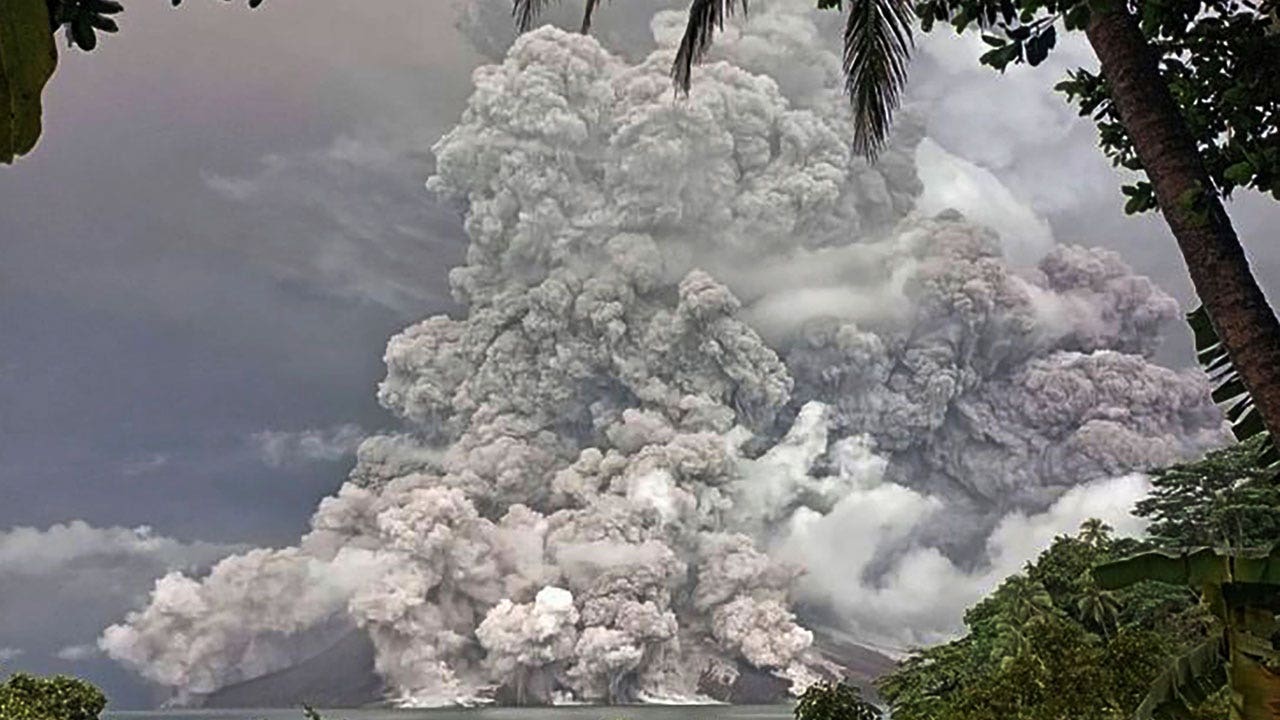
Indonesia’s Mount Ruang volcano spewed more hot clouds on Wednesday after an eruption the previous day forced the closure of schools and airports, pelted villages with volcanic debris and prompted hundreds of people to flee.
Seven airports, including Sam Ratulangi international airport in Manado, the capital of North Sulawesi province, remained closed after Tuesday’s eruption, the second in two weeks. Schools were shut to protect children from volcanic ash.
The volcano is on tiny Ruang Island, part of the Sitaro islands chain.
VIDEO SHOWS LIGHTNING SHOOTING FROM TOXIC ASH CLOUD DURING POWERFUL VOLCANIC ERUPTION IN INDONESIA
The Indonesian geological agency urged people to stay at least 4 miles from the volcano’s crater. It warned people on nearby Tagulandang Island, the closest to the volcano, of possible super-heated volcanic clouds from a further eruption and a tsunami if the mountain’s volcanic dome collapses into the sea.
Mount Ruang releases volcanic materials during its eruption on April 30, 2024, on Sulawesi Island, Indonesia. The volcano erupted on April 30 for a second time in two weeks, spewing ash more than a mile into the sky, forcing an airport to close and peppering nearby villages with debris. (Vulcanology and Geological Disaster Mitigation Center via AP Photo)
Video released by the National Search and Rescue Agency showed about a hundred villagers from Tagulandang Island being evacuated on a navy ship. Hundreds of others were waiting at a local port to be evacuated.
Agency spokesperson Abdul Muhari said 11,000 to 12,000 people living within a 4-mile danger zone would be taken to government shelters.
Tuesday’s eruption darkened the sky and peppered several villages with ash, grit and rocks. No casualties were reported.
After Mount Ruang’s April 17 eruption, authorities warned that a subsequent eruption might collapse part of the volcano into the sea.
Ruang is among about 130 active volcanoes in Indonesia. The archipelagic nation is prone to volcanic eruptions and earthquakes because of its location on the Pacific “Ring of Fire,” a series of fault lines stretching from the western coast of the Americas through Japan and Southeast Asia.
-

 Education1 week ago
Education1 week agoVideo: Dozens of Yale Students Arrested as Campus Protests Spread
-

 World6 days ago
World6 days agoHaiti Prime Minister Ariel Henry resigns, transitional council takes power
-

 News7 days ago
News7 days agoLarry Webb’s deathbed confession solves 2000 cold case murder of Susan and Natasha Carter, 10, whose remains were found hours after he died
-

 Politics1 week ago
Politics1 week agoFetterman hammers 'a–hole' anti-Israel protesters, slams own party for response to Iranian attack: 'Crazy'
-

 World1 week ago
World1 week agoPeriod poverty still a problem within the EU despite tax breaks
-

 World7 days ago
World7 days agoUS secretly sent long-range ATACMS weapons to Ukraine
-

 News6 days ago
News6 days agoFirst cargo ship passes through new channel since Baltimore bridge collapse
-

 World1 week ago
World1 week agoTurkey’s Erdogan meets Iraq PM for talks on water, security and trade

